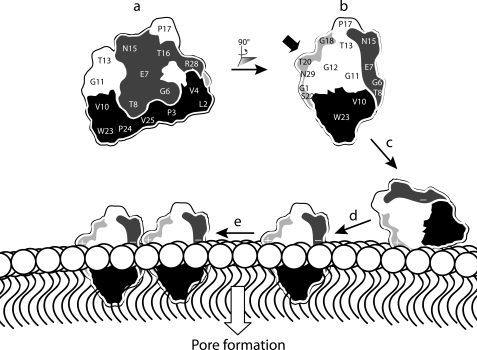FIGURE 6.
Schematic representation of functionally important regions of kalata B1 and their role in the proposed mechanism of action. a, representation of kalata B1 displaying the bioactive (dark gray) and hydrophobic face (black). b, rotation of kalata B1 by 90° reveals the amendable face of kalata B1, which is colored light gray. The incorporation of a lysine residue in the amendable face (indicated by the bold black arrow) probably facilitates electrostatic interactions between kalata B1 and the negatively charged membrane head group region as illustrated in c. In d, interactions between the hydrophobic patch on kalata B1 and the hydrophobic core of the membrane result in peptide insertion. We speculate that peptide self-association might occur, as shown in e, ultimately leading to pore formation.

